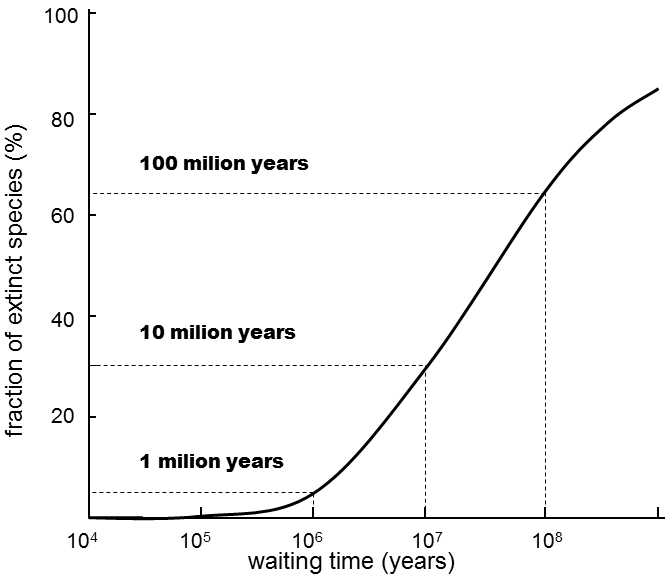XXII.5.2 The existence of periods of mass extinction enables us to divide the history of life on Earth into stages with different characteristic compositions of fauna and flora
Sharp discontinuities exist in the paleontological record, where the species composition of the leading (i.e. most frequent) fossils suddenly changed in certain neighboring layers.Today, it is apparent that these discontinuities were caused by mass extinction, during which the rate of extinction increased many fold.In the periods following mass extinction, the number of species and the sizes of their populations were renewed with a certain delay; however, in a number of cases, the species composition of the renewed communities changed drastically.While the members of a certain taxon dominated in the individual communities in the period that preceded the mass extinction, in the following period the members of this taxon were of only marginal importance and their place could be occupied by the members of some other taxon.On the basis of the existence of a great many more or less marked periods of extinction that affected communities over a wide territory or even life on a global scale, the history of evolution during the Phanerozoic eon, i.e. the period from which numerous fossils of multi-celled organisms with hard skeletons or shells are available, can be divided into time zones: eras (e.g. Palaeozoic), periods (e.g. Permian), epochs (e.g. the Early Devonian) and ages (e.g. Lochkov), see the Fig. XXII.4 .Simultaneously, the individual time zones differ in the compositions of their fauna and flora.

Fig. XXII.4 Power law. Idealized distribution of the frequency of phenomena that corresponds to a power law. There is a linear dependence with a negative slope between the logarithm of the frequency of a certain phenomenon and logarithm of its intensity (magnitude).
